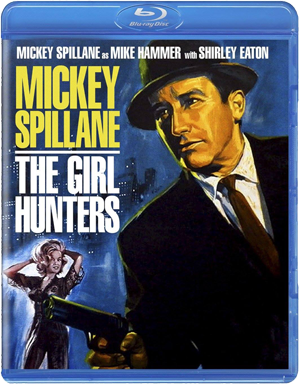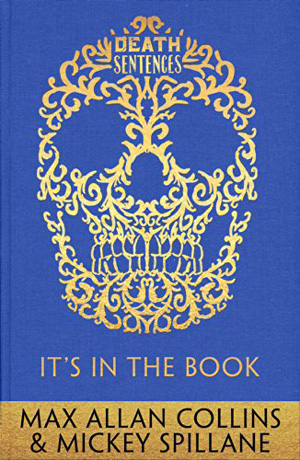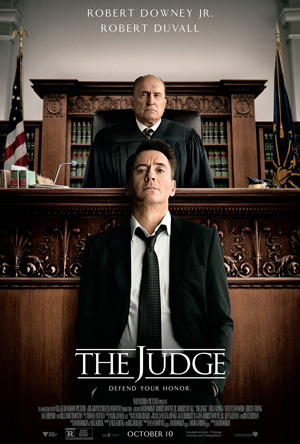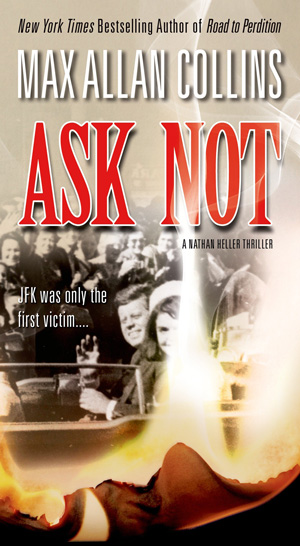
An 8-CD set called JAZZ ON FILM – CRIME JAZZ! has just been released in the UK. The “film” part of the title somewhat misrepresents the set, which is dedicated almost entirely to the TV private eye and crime TV shows of the late ‘50s and early ‘60s. The liner notes are written by yours truly, an assignment I eagerly accepted although there was no money involved – which is the kind of career decision that keeps me semi-known, and in Iowa.
The best price is directly from Amazon UK right here (though you can order it through the USA Amazon, too).
My liner notes discuss each of the albums. Check out this astonishing line-up: “77 Sunset Strip,” “Hawaiian Eye,” “Checkmate,” “Shotgun Slade,” “The Naked City,” “Richard Diamond,” “Bourbon Street Beat,” “M-Squad,” “The Untouchables,” “Peter Gunn,” “Mr Lucky,” “Staccato” and “Mickey Spillane’s Mike Hammer” (both the TV series soundtrack and the music from the rare Stan Purdy “Mickey Spillane’s Mike Hammer Story” LP).
This is an incredible bargain, and features the likes of Henry Mancini, John Williams and Nelson Riddle.
Here is the opening of my liner notes (you’ll have to buy the set to read my CD by CD discussions).
Full disclosure: I’m not a jazz buff. I was invited to the party because of crime-writing credentials, and a love for the late ‘50s/early ‘60s wave of TV private eye shows in America, an enthusiasm I’ve never been shy about sharing.
On the other hand, jazz is in the ears of the beholder. It’s a term that cuts a wide swath, and is defined in so many ways by so many fans that it nearly falls into the all-things-to-all-people category. I mean, we’re talking about a term that covers everything and everybody from Al Jolson to Miles Davis.
Similarly, “noir” is defined in many ways by many fans of crime fiction and films. Its roots are French, the term “noir” borrowed by film critics (several of whom went on to be noted filmmakers) from “Serie Noire,” a line of books from Gallimard that after the Second World War began translating and publishing such American crime writers as Dashiell Hammett, Raymond Chandler, Jim Thompson, Chester Himes and many more, including the author of this introduction.
But the term noir – chiefly designed to discuss American crime films of the war years that disguised a dearth of budget by a maximum of creative, moody lighting effects – has come to refer to all tough crime fiction, replacing the antiquated-sounding “hardboiled.” Arguments about what truly is noir occur constantly. Some critics, including the esteemed Otto Penzler, insist that private eye stories aren’t truly noir, because they aren’t bleak tales told from a criminal’s point of view. This will come as a surprise to anyone who’s read Mickey Spillane’s One Lonely Night (1951) or seen Jacques Tourneur’s Out of the Past (1947).
Spillane is a key figure here because his brutally tough, sexually active, war-haunted Mike Hammer created a boom in the private eye field at a point where radio had trivialized this mythic character into self-parody. Hammett’s prototypical tough P.I. Sam Spade became a figure of fun as a radio series, and Jack Webb’s various pre-Dragnet P.I.’s were all send-ups.
But Spillane revitalized the genre and – perhaps as a conscious follow-up to the craze for westerns on American television in the mid- to late fifties – a new wave of private eyes grabbed TV viewers like hoodlums they were roughing up. Generally considered to be first, and the gold standard, was Blake Edwards’ Peter Gunn and its cool jazz score by Henry Mancini, whose impact forever changed the way television series utilized music. (The interesting connection between Blake Edwards and Gunn and Spillane and Hammer will be discussed below.)
Mancini’s bestselling soundtrack created a whole new genre of vinyl entertainment for hi-fi enthusiasts, as well as an additional revenue stream for TV studios. In the late ‘50s and early ‘60s, such soundtracks – like comedy albums showcasing stand-up comics – were a craze unto themselves. Several P.I. series that pre-dated Peter Gunn (which first aired September 22, 1958) revamped their formats, often including an exciting movie-credits style opening inspired by Gunn’s, bringing a jazz-infused style to the scoring…as well as the opportunity for a soundtrack album.
This collection gathers many of the best of those albums, and while the Gunn influence can easily be discerned again and again, each has its own personality and merits, like the various TV series for which the scores were composed.
(Continued on the liner notes of JAZZ ON FILM – CRIME JAZZ.)
Though nobody at DC has notified me about it, apparently a collection of most of my controversial BATMAN work is coming next year:
Max Allan Collins, Dave Cockrum
On Sale Date: July 21, 2015
$19.99 USD
272 pages
Trade Paperback
Comics & Graphic Novels / Superheroes9781401255183, 1401255183
Summary: After an encounter with Gotham City street criminals, Dick Grayson, a.k.a. Robin, is injured. When Batman goes into action on his own, he meets a young hoodlum called Jason Todd. Determined to guide Jason away from a life of crime, Batman takes him under his wing. These 1988 stories take Batman into police procedural territory, and set the stage for the bestselling BATMAN: A DEATH IN THE FAMILY. Written by acclaimed mystery novelist Max Allan Collins, best known for his graphic novel THE ROAD TO PERDITION, which was made into a Academy Award winning movie starring Tom Hanks, Paul Newman and Jude Law.
Collects BATMAN #402-403, 408-416 and BATMAN ANNUAL #11.
Speaking of my controversial BATMAN run (controversial in the sense a lot of fans think my work sucked and I don’t), here’s a fair-minded discussion of the Robin character as revamped by me and killed off by homicidal phone-call poll.
A very nice write-up about my Nathan Heller novella “Dying in the Post-War World” (available in TRIPLE PLAY) appears at the Gravetapping blog site. It was widely picked up in the mystery community.
Here’s a dandy review of the blu-ray of THE GIRL HUNTERS.
And here’s a solid discussion of the DICK TRACY strip, including my years on the feature.
Finally, I was pleased and honored that reviewer J. Kingston Pierce at The Rap Sheet chose BYE, BYE BABY as one of his ten favorite mystery novels of the past ten years.
M.A.C.







